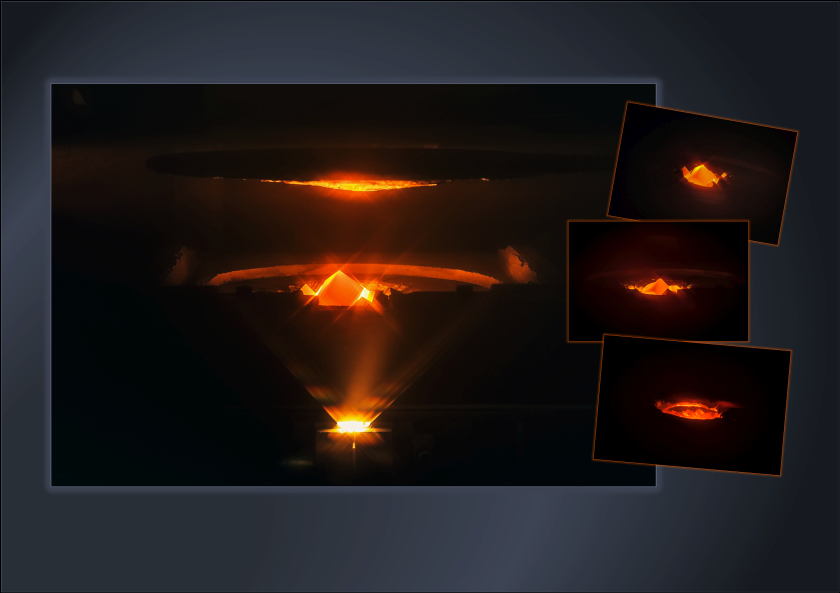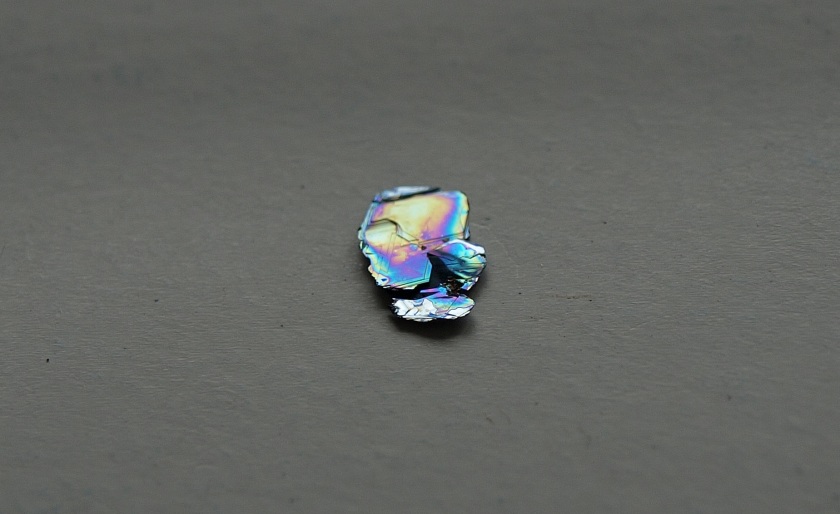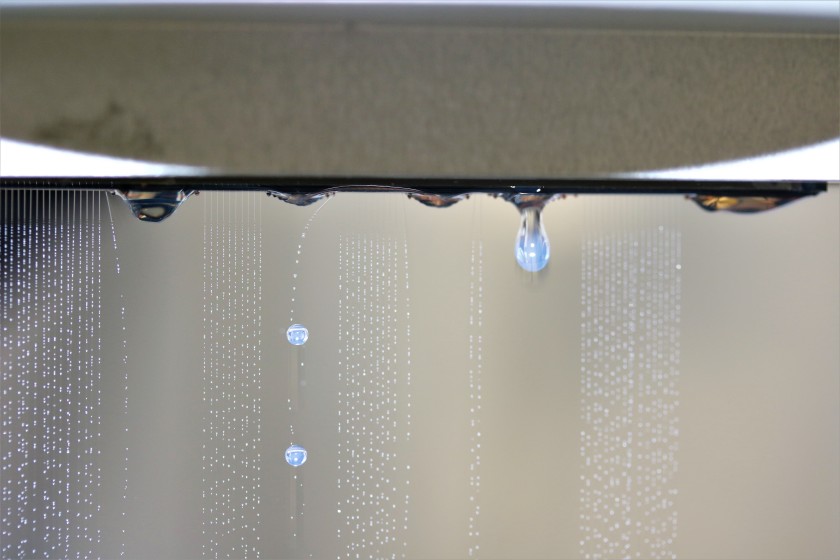1st place for "Glowing Silicon Lake" at the HZB photo competition for the Long Night of Science

1st place: "The interior of an electron beam evaporator in operation" © HZB/Martin Muske und Mona Wittig

2nd place: "Rainbow in a sample" © Mattia Mulazzi

3rd place: "Cleaning an inkjet printhead after printing" © Michael Hengge
More than 200 people have chosen their favourite pictures in the photo competition "Moments at the HZB" during the Long Night of Science. The winners have now been chosen, but the decision was extremely close.
With 54 points, the photo of Martin Muske and Mona Wittig wins first place. It provides a fascinating insight into the work of an electron beam evaporator in which small silicon cubes are melted.
Second place goes to Mattia Mulazzi. His picture "Rainbow in a sample" was only just behind with 52 points. What can be seen is a dazzling single crystal that appears very aesthetic and captivates its viewers.
Michael Hengge's painting wins third place with 50 points. Hengge photographed a print head of an inkjet printer during cleaning. The water drops in the close-up immediately catch the eye. The device is used to produce organic LEDs or other components.
The winners can look forward to a voucher for photo accessories worth 150 €, 100 € and 50 €. The photo competition was sponsored by the Freundeskreis Helmholtz-Zentrum Berlin e. V. (Friends of the Helmholtz Centre Berlin).
The three winning photos can be viewed during the week in the BESSY II foyer. All exhibited pictures can be found in the PDF.
About the competition:
All HZB employees were invited to submit a maximum of five pictures for the photo competition. There were a total of 53 submissions, from which a jury made a preselection. 32 photos were then hung outdoors during the Long Night of Science on 15 June. The photo competition was very popular, with many guests taking part and awarding up to three points for their favourite photos.
We would like to thank the Freundeskreis Helmholtz-Zentrum Berlin e. V., whose support enabled the photo competition to be announced.
(sz)
https://www.helmholtz-berlin.de/pubbin/news_seite?nid=20611;sprache=en
- Copy link
-
Long-term stability for perovskite solar cells: a big step forward
Perovskite solar cells are inexpensive to produce and generate a high amount of electric power per surface area. However, they are not yet stable enough, losing efficiency more rapidly than the silicon market standard. Now, an international team led by Prof. Dr. Antonio Abate has dramatically increased their stability by applying a novel coating to the interface between the surface of the perovskite and the top contact layer. This has even boosted efficiency to almost 27%, which represents the state-of-the-art. After 1,200 hours of continuous operation under standard illumination, no decrease in efficiency was observed. The study involved research teams from China, Italy, Switzerland and Germany and has been published in Nature Photonics.
-
TT-Award 2025: Perovskite solar cells from Germany
Photovoltaics is the leading technology in the transition to clean energy. However, traditional silicon-based solar technology has reached its efficiency limit. Therefore, a HZB-team has developed a perovskite-based multi-junction cell architecture. For this, Kevin J. Prince and Siddhartha Garud received the Helmholtz-Zentrum Berlin's (HZB) Technology Transfer Prize of 5,000 euros.
-
Self assembling monolayer can improve lead-free perovskite solar cells too
Tin perovskite solar cells are not only non-toxic, but also potentially more stable than lead-containing perovskite solar cells. However, they are also significantly less efficient. Now, an international team has succeeded in reducing losses in the lower contact layer of tin perovskite solar cells: The scienstists identified chemical compounds that self-assemble into a molecular layer that fits very well with the lattice structure of tin perovskites. On this monolayer, tin perovskite with excellent optoelectronic quality can be grown, which increases the performance of the solar cell.
